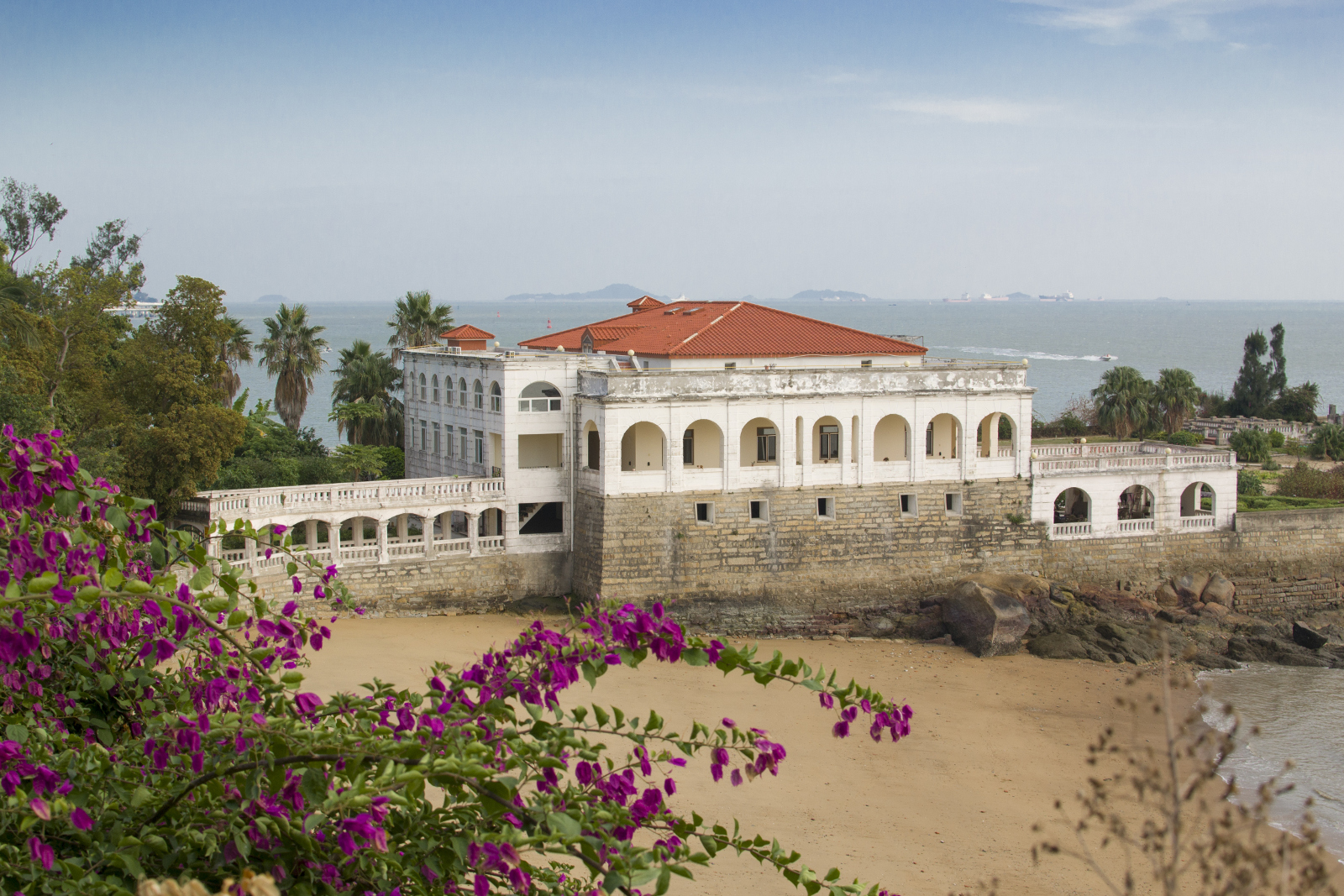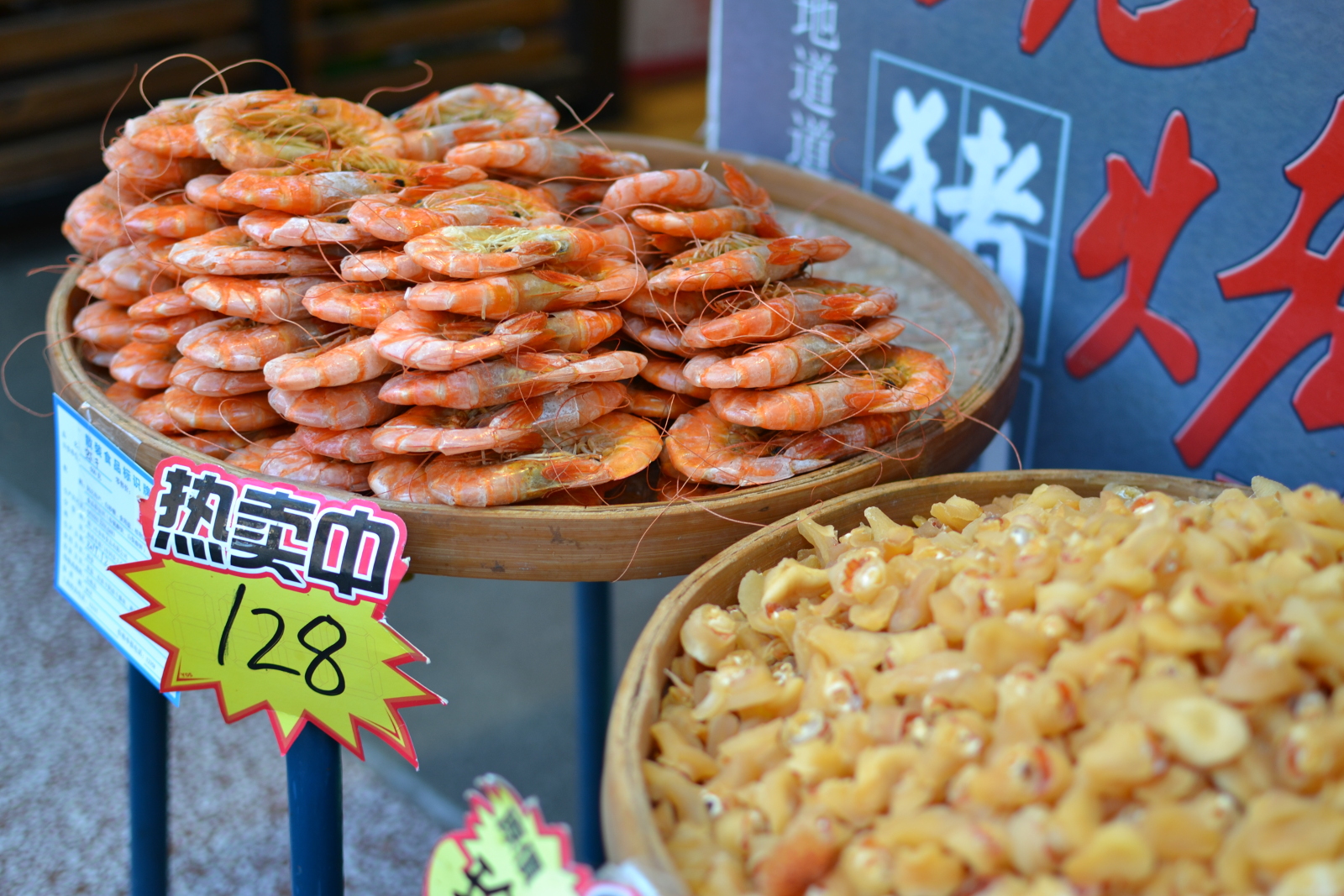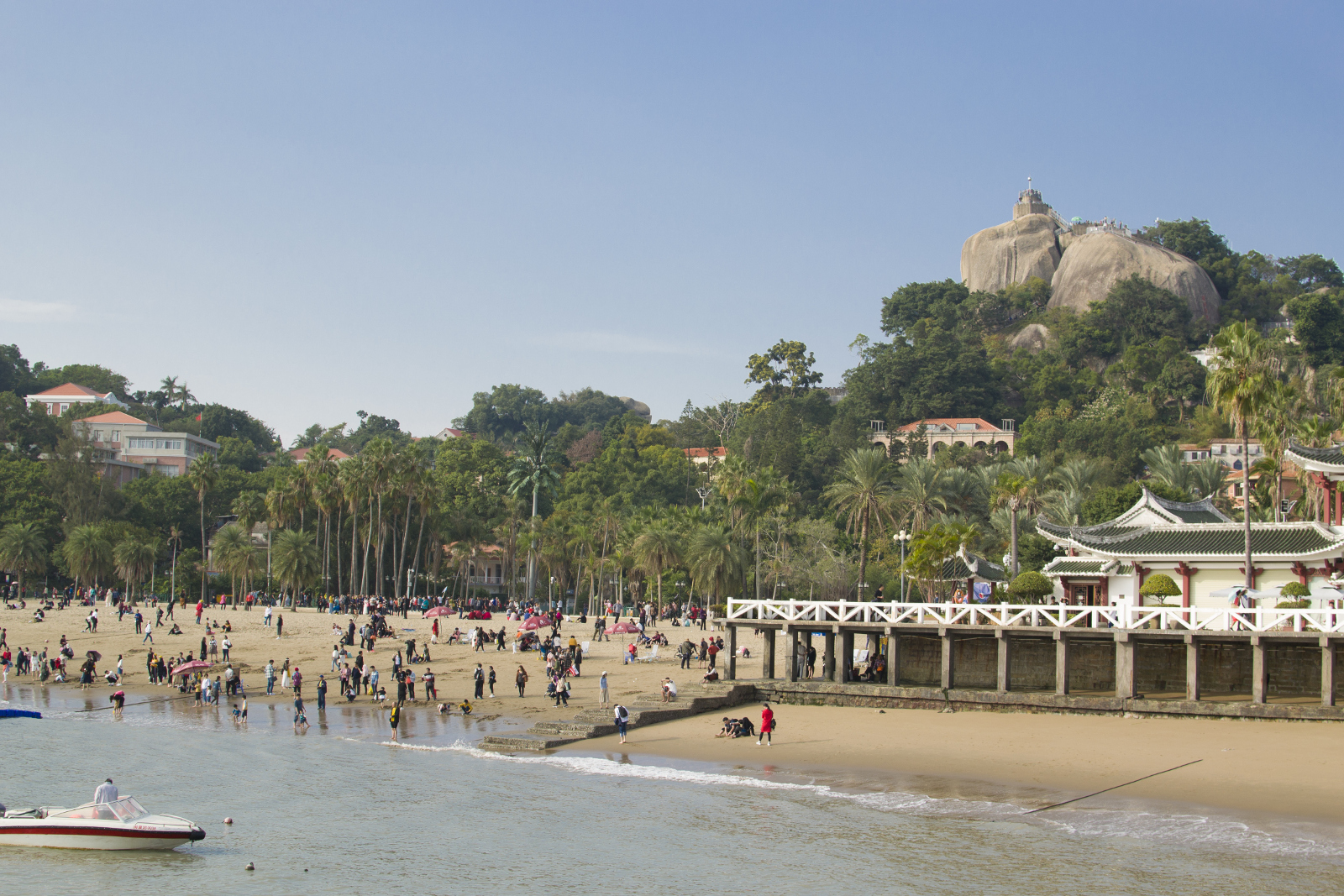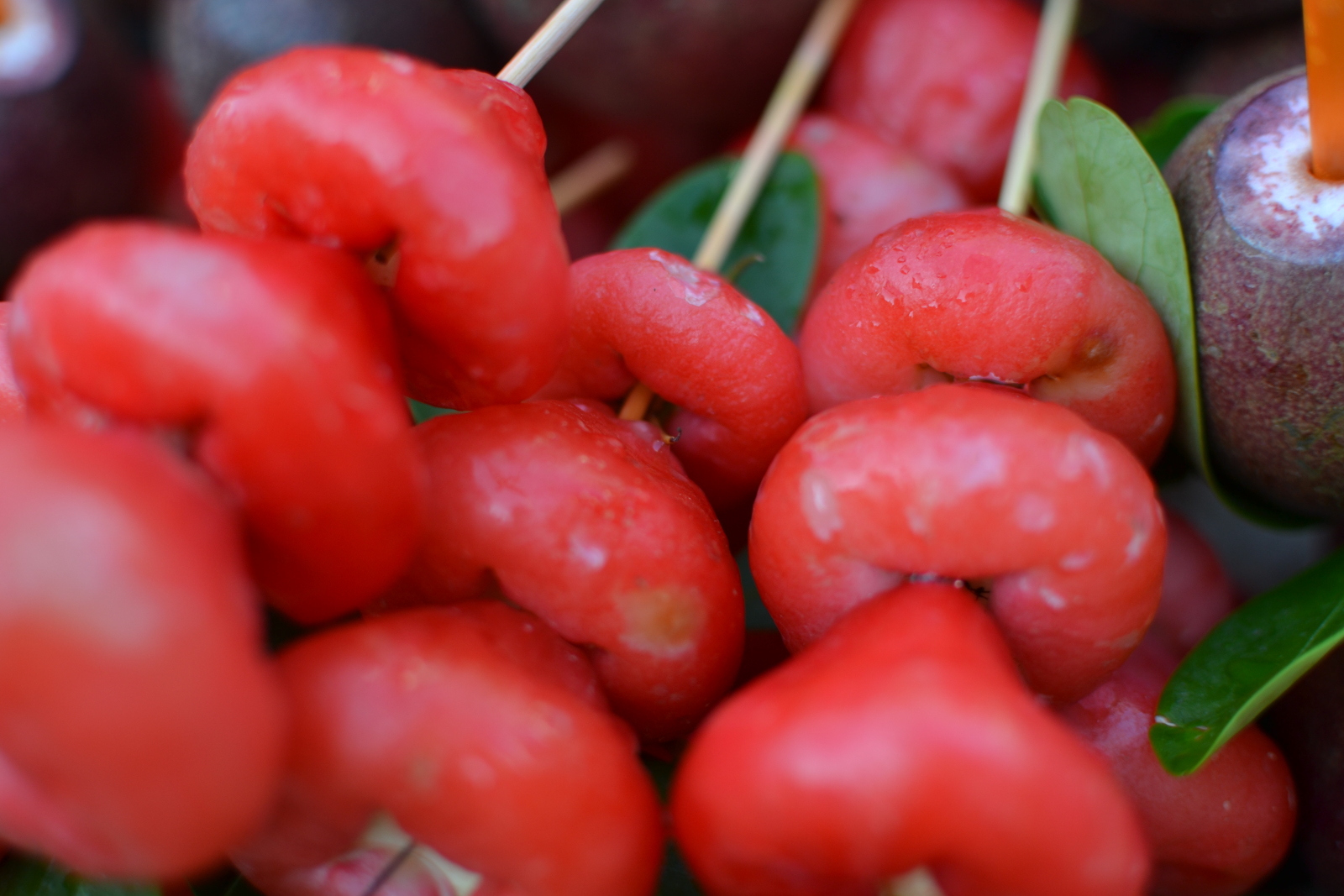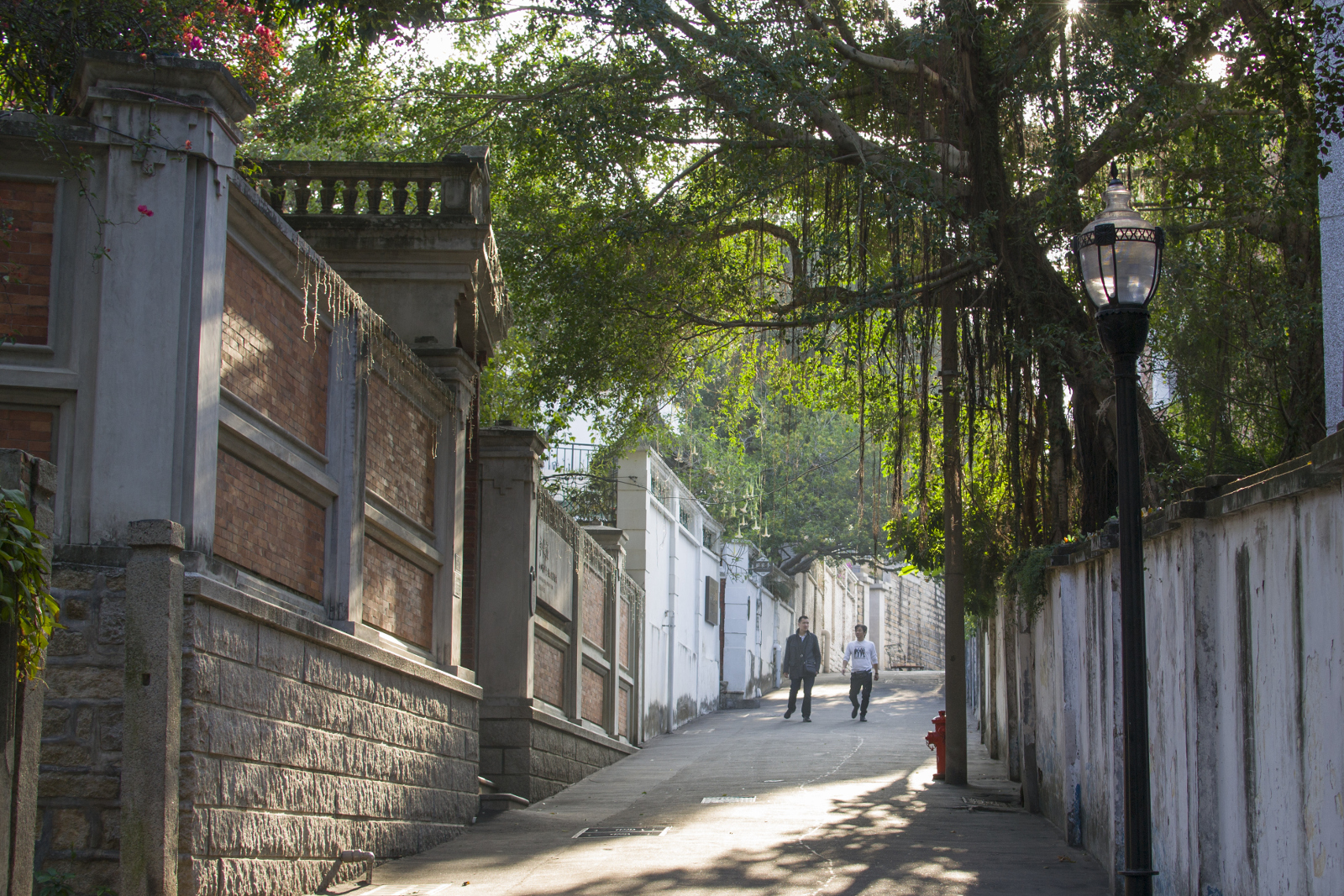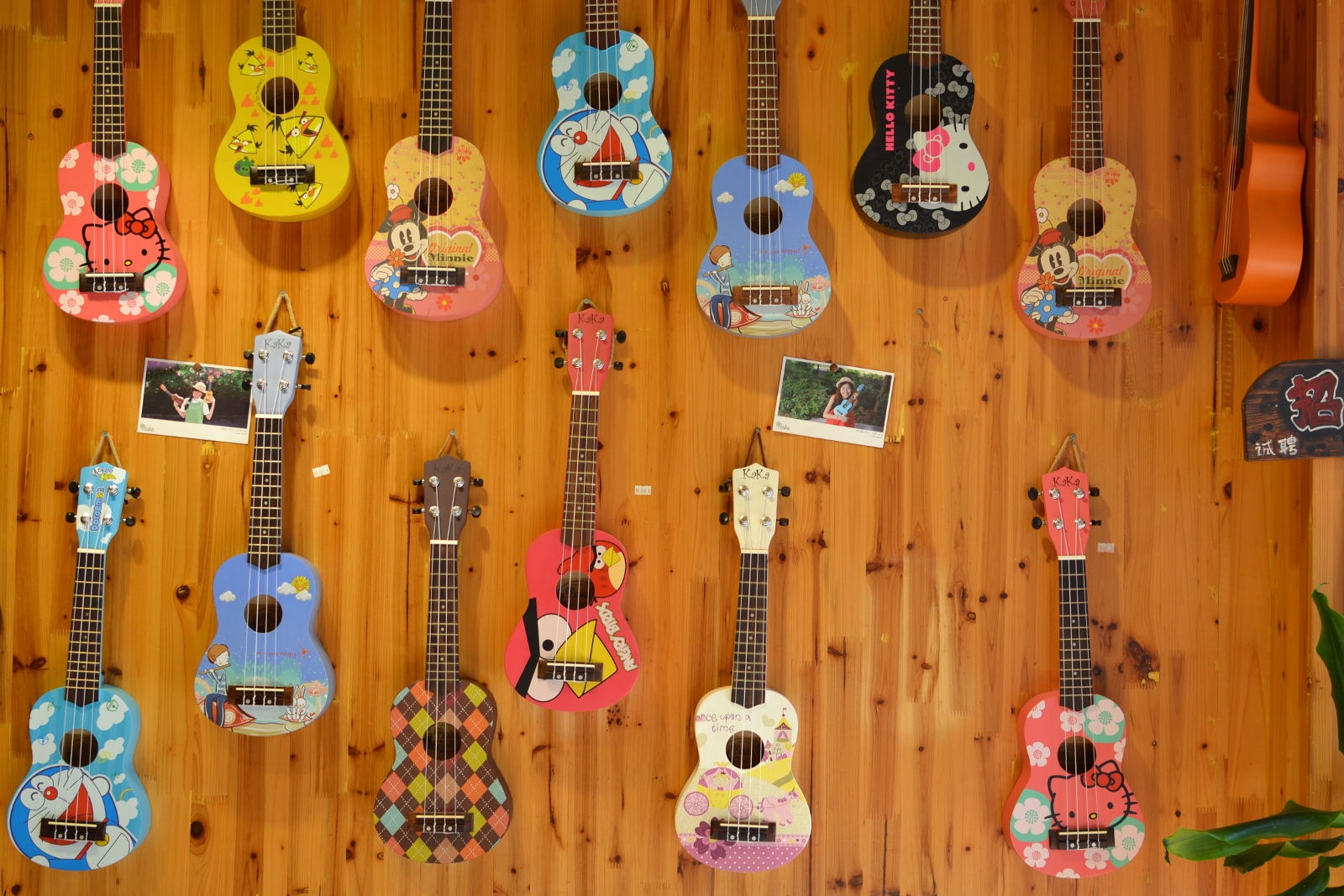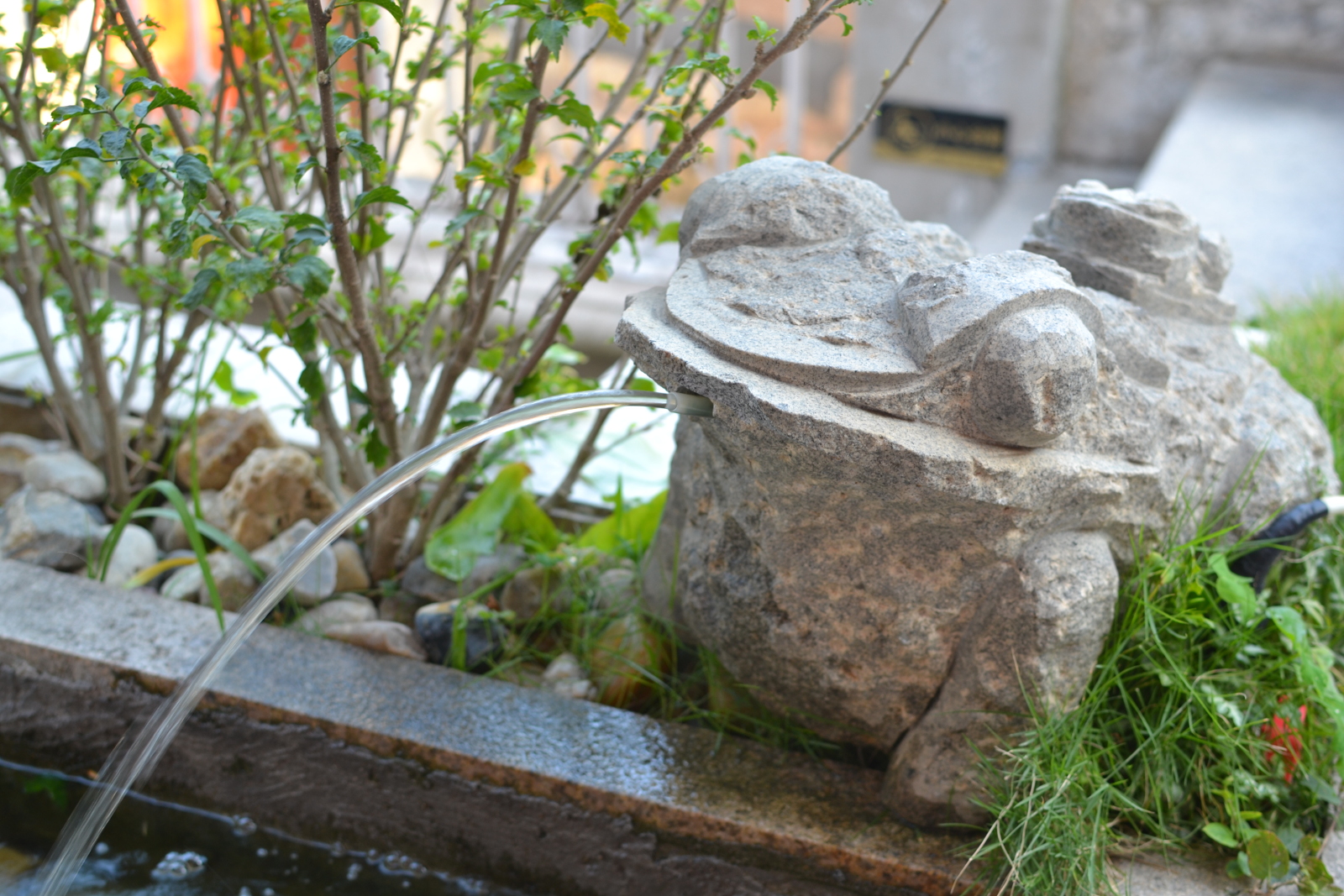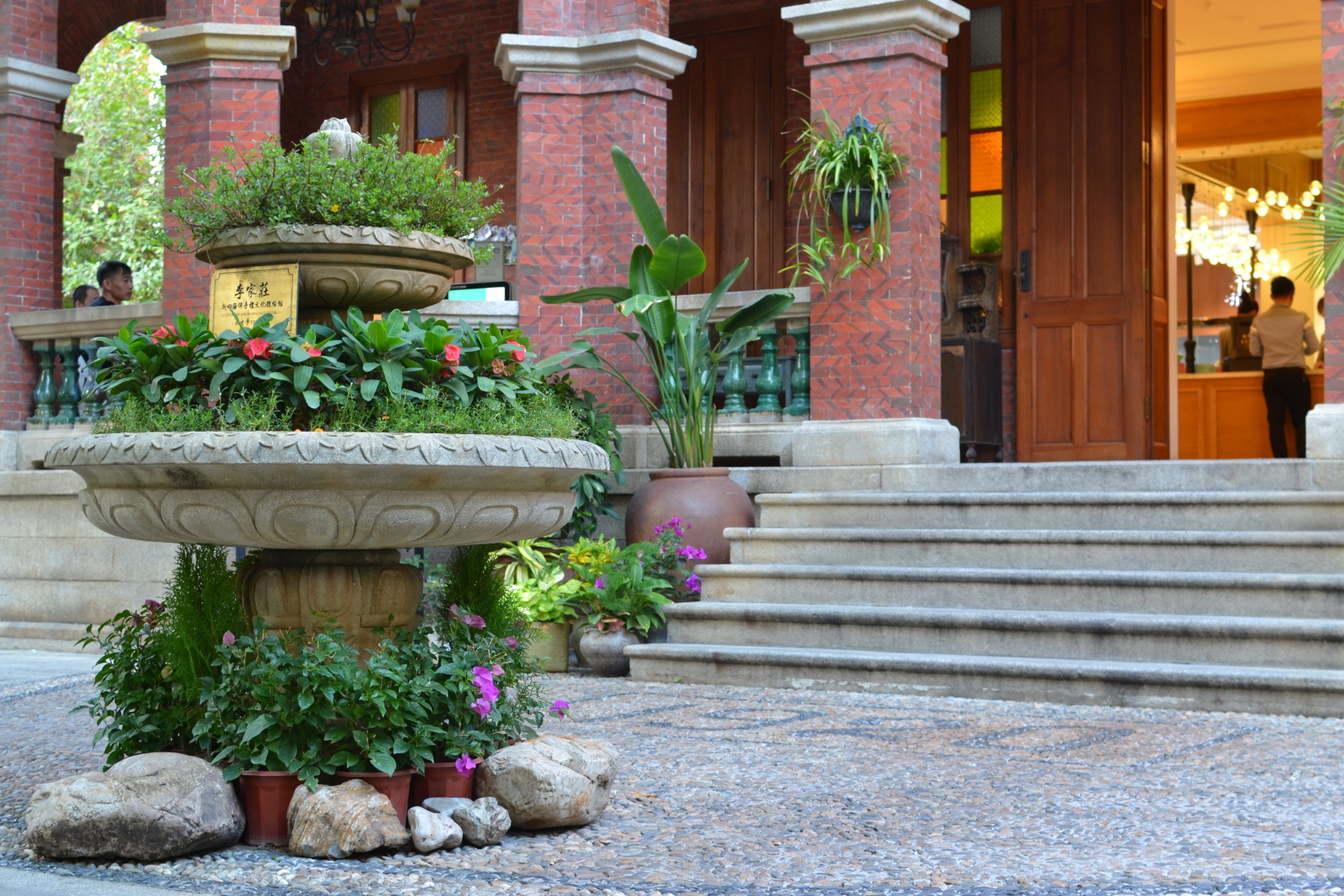Spellbound in Gulangyu
Text & Photographs
by Brian Kuhl
[Published by the online travel magazine Coldnoon, August 12, 2018. Read on the Coldnoon website here.]
In China, whenever I see a teddy bear coming toward me hanging from a pole, I make a beeline for the opposite direction. That’s a sure sign a tour group is approaching, and despite having lived there for seven years, I never got used to the crowds. Though I enjoy individual interactions, sightseeing in China is most often done in groups, which swarm even minor attractions.
So I approached my trip last December to Gulangyu, an island off the coast of Xiamen, with some misgivings. Its name (“Kulangsu” in the local dialect) means “drum wave island,” from the sound waves were said to make crashing into rocks near the site of the former German Consulate. Today a more likely sound might be that of the waves of tourists rushing through the gates of the ferry. In peak season, up to 35,000 people visit daily – in an area less than one square mile.
Gulangyu’s claim to fame is its mix of architecture from East and West. It was an international settlement in the early 20th century, and many buildings from that era survive. That and the fact that no vehicles are allowed on the island – not even bicycles – give it an “old world” feel. But would it actually be peaceful? Already one of the top domestic tourist destinations, the island was named a UNESCO World Heritage Site last year, putting it on the radar of ever more people.

Chinese and Western architectural elements on a building.

A seaside villa near the Piano Museum.

Shrimp and clam meat for sale.

Sunlight Rock, the highest point on the island, overlooking a beach.

A lion head fountain seen through an iron gate.

Lian wu, commonly known as "wax apples" in English, sold by roadside vendors on the island.

Men walk down Zhangzhou Road, one of Gulangyu’s many walled lanes.

Ukuleles on sale at a souvenir shop.

A frog fountain outside the entrance to the Phoenix Hotel.

The entrance to Lee House, a specialty goods store.
Bridal Town
My first aim was to get the lay of the land. Roaming the quiet back streets under blue skies, I watched the little shops opening up. I wanted to enjoy what the island offered without bogging down in tourist traps – no mean feat in a place full of them. So I crossed off my list a number of famous sites, like Sunlight Rock, the highest natural spot on the island with great views. But I wondered if that would leave me with enough to do for three days on such a tiny island.
I was meeting friends at midday at a wharf on the opposite side of the island, so I made my way across the center, an area I would not otherwise have sought out. That it was off the beaten path with few shops or tourist sites made it a delightful diversion. My friends and I then walked along the north shore of the island, again a pleasant surprise. There’s nothing in that area but several parks – too boring for most tourists.
We finally had some company when we walked through Yanweishan Park: newlyweds. More precisely, nearly newlyweds, as wedding photos in China are often taken prior to the day of the ceremony. About ten happy couples posed for the cameras, lounging on the grass and beaming by the water’s edge. I would see many more throughout the weekend, as Gulangyu’s scenery is a top draw for wedding portraits.
East Meets West
After a quick lunch, we went in search of the former residence of Lin Yutang, a prolific author of the last century. Like the island itself, Lin was a product of East and West, as he lived in the U.S. on and off for much of his life. His works in the 1930s and 1940s were bestsellers that introduced China to American audiences.
 |
| The character for the family name Liao, marking the lane leading to Lin Yutang’s former residence. (click to enlarge) |
The character for the family name Liao, carved in stone, is the only thing that marks the small lane leading to the property. Lin and his wife lived in one of the villas, owned by her father, Liao Yuefa, shortly after they were married in 1919.
We arrived to find the site closed for renovation. Disappointed, I took a few photos through the bars in the locked gate before turning to leave. Just then, a young man with a scruffy beard and tousled hair came up the lane. “I’ll let you in,” he said, reaching through the bars to undo the latch on the inner side of the gate. Fortuitously, he was part of the renovation team, returning from a break.
A large stone staircase led up to the second floor of the building in which Lin lived. We climbed the steps to find a dilapidated facade behind the porch, with broken windows and a gutted interior. A sign at the top warned, “Caution: Danger of collapsing. Please stay away.” My friend looked at me and said what I was thinking: “Wouldn’t it be better to put that at the bottom of the stairs?”
She and her husband beat a quick retreat, but I lingered a bit to take photos. Turning to go, I looked at the large old camphor tree in the yard, thinking perhaps Lin had gazed upon the same tree in its youth. My reverie was broken when I looked down to see a dead cat lying next to the trunk. Definitely an area not ready for tourists.
Give Me That Old-Time Pianoforte
The next stop was the southern coast of the island and Shuzhuang Garden, built by a wealthy Taiwanese merchant in 1913. Like all Chinese gardens, it was carefully planned: winding paths led through flowers beds and footbridges spanned ponds of lotus plants.
Making our way from the garden to the Piano Museum on the hill behind it involved a stone walkway that snaked out over the sea to another part of the shore, where stairs led up to the museum. The walkway was one of the busiest areas we encountered, packed with selfie-takers standing against the glittering littoral background.
So much of tourism these days consists of taking selfies in a famous or beautiful location, and nowhere is this more true than in China. Lin Yutang anticipated this 80 years ago, when he wrote about visitors having their pictures taken drinking tea at Hupao, “a place famous for its tea and spring water” near West Lake in Hangzhou. “The danger,” he warned, “is that one spends less thought on the actual taste of the tea than on the photograph itself.”
Thus, the walkway was more crowded than the Piano Museum, one of the island’s gems. We walked through two large buildings of period instruments, from grand pianos to miniature keyboards for children.
Why does this tiny island have one of the world’s largest piano museums? One reason is that Xiamen was a missionary hub, and many of the city’s foreigners lived on Gulangyu, bringing pianos with them to spread their message through song. But the music caught on more than the faith, and Gulangyu, home to many famous Chinese pianists, became nicknamed “Piano Island.” Older guidebooks even claimed that, while strolling the lanes, visitors might hear people practicing in their homes, though newer accounts note how rare this has become.
It was now late afternoon, and we ambled in the direction of the ferry. I would stay the night in Xiamen and return the next day for an overnight. Nowhere we had gone during the day had seemed overcrowded, but it was clear from the throng waiting for the ferry how busy the island was, even in December.
Residents say that increased tourism has taken a toll on the island. Between 2009 and 2014, the number of tourists jumped 143%. Ye Lanxin, a 25-year-old sales representative who grew up on the island, told me the most important result of Gulangyu becoming a World Heritage Site was to curb that increase. But the new daily limit of 35,000 visitors, combined with the year-round population, still results in a population density similar to that of Kolkata, India. And it’s not the same island it was during her childhood, Ye said, as a sharp increase in the cost of living has priced out many locals, causing some to move away.
Classical and Ramshackle
By the time I got to Gulangyu the next day, it was nearly lunch, so I got a shou zhua bing, sort of a fried wrap, from a street vendor before heading to my first stop, the former U.S. consulate. The grounds are closed to the public, but I peered through two sets of locked iron gates for a glimpse inside. The upper gate leads to the consulate building, set back a bit, looking like it had been dropped in from Monticello. The lower gate overlooks a vast lawn at the bottom of a hill. Just after I took some photos there, a burly young Chinese man with a crew cut came up, looked inside, and spat forcefully through the gate. Whether or not that was a symbolic gesture, it seemed like a good time to take my leave.
After checking in at my hotel, I set out for the afternoon. I had noted a few places the day before that I wanted to photograph. The first was an old building covered in vines. Although many of the island’s structures have been restored to an earlier grandeur, some can only be described as ramshackle. This one looked especially neglected, like a decaying Southern mansion losing a battle with kudzu.
The road by the building was narrow and hemmed in by the walls that flank many of the island’s lanes. Pausing by the wall to let a tour group pass, I looked left to see an older Asian man striding up to me. He was neatly dressed in a blue chambray shirt with a large insignia of Mickey and Minnie Mouse on the breast pocket.
“Where are you from, my dear?” he asked in a slight British accent.
America.
“Oh, I thought you were French.”
Why?
“French people are very small.”
As he moved closer to me by the wall, he nearly stepped in a pile of dog droppings. I grabbed his elbow and said, “Be careful,” pointing down.
“Oh, crap!” he exclaimed, using another word for the term. “So close – it must be divine intervention!” And off he went, chuckling to himself, before I had a chance to say goodbye.
A Fork in the Road
“I was strolling along under the warm afternoon sun when I heard it . . . ”
I wanted to see the statue of Zheng Chenggong, a local military hero who resisted the Qing when they overthrew the Ming, so I headed up Zhangzhou Road. At the top of a hill was a fork, where the Xiamen Music School sits. A number of people stood at its gate taking selfies. They then invariably wandered rightward toward the tourist attractions, like the garden we had been to the day before.
I knew the statue of Zheng was toward the left, so I walked alone down Fuxing Road, through a residential area, hoping it would come out at the right spot. I was strolling along under the warm afternoon sun when I heard it: piano music.
I stopped to focus on where it was coming from. It wasn’t Schubert – only scales – but it was lovely. For a minute, I stood there enrapt, with only birdsong competing with the music for my attention. So it still can be “Piano Island” after all, if you’re willing to put down the selfie stick and take the fork less traveled.
Broken Spells
Dusk was falling as I walked along the water toward the statue of Zheng, which faces the Lujiang Strait directly opposite the twin towers of the Xiamen Shimao Cross-strait Plaza. In September 2016, Typhoon Meranti, a Category 5 storm at its peak, pounded Gulangyu, causing widespread damage and uprooting over 3,000 trees. Local superstition has it that the statue had always cast a protective spell, diverting typhoons from coming too close to the island. But people say the knife-shaped towers, completed the year before, broke Zheng’s spell, so Gulangyu suffered a direct hit.
It was now dark and I walked back toward the shopping area, in search of dinner. The night skyline across the water was lit up in neon, with a supermoon rising over the skyscrapers. Near the shops on Longtou Road, a bride in white passed me, carrying her train, with her entourage just behind, lugging camera equipment. Following at a distance, limping slowly, was the groom. Most of the tourists were heading home, and after dinner I too called it a night.
I stayed at the tidy Phoenix Hotel, in a quiet residential area. It has only eight rooms and a modern style heavy on wood and exposed concrete, creating a serene atmosphere that was interrupted only once. Around 11:30 p.m., just as I was drifting off, a TV in one of the upstairs rooms started blaring Peking Opera. Then – in response? – cats in heat howled from outside, and for a time the two formed a duet that broke the protective serenity of the hotel with Category 5 cacophony. To his credit, the night clerk quickly bounded up the stairs to quiet the TV-watching guest. But he could do nothing to cool the ardor of the uninvited guests beyond the walls.
Becoming a Tourist Attraction
I was out the next morning just after seven. Off season, on a weekday morning, the island is extremely peaceful. What’s more, you’re reminded that Gulangyu is a community like any other. Kids in backpacks filed dutifully to school and vendors in wet markets set up for the day.
After walking a while, I ended up at Lee House, a specialty shop with three floors of tea, snacks, and souvenirs. But the hidden attraction is the roof deck, open to the public. There, for free, is a view over the red rooftops of the main shopping area, to the water beyond, and to downtown Xiamen in the distance – the same as the $10 view from the top of Sunlight Rock. Alone on my rooftop aerie, I even had a bird’s eye view of Sunlight Rock itself and its small peak packed with sightseers.
On my way back to the hotel to check out, I stopped by the decrepit old mansion I had visited the day before to photograph it in different light. Pausing for a family to pass in front of me, I greeted them in Chinese and then went back to my task. Before I knew it, the father had returned with his young daughter, whom he maneuvered next to me. He then held his camera up to compose a photo.
The girl looked a bit stunned while Dad snapped his shot and showed it to us. Then Mom was at my other side for another picture. I had now become a tourist attraction. But I didn’t mind. I like to think that old mansion cast a spell of its own, creating these oddly endearing encounters.
Later, walking to the ferry, I reflected on the fact that I had found both peace and plenty to do. The island’s size is deceptive, as there was far more than I had time to see in a long weekend – even while avoiding busy spots. My only regret was that I could not stay longer, but I knew I would return someday to explore more. And to see who else I would meet by the old mansion covered in vines.♦

